After a short journey, I’ve arrived at a bland industrial park just outside Abingdon in Oxfordshire. It’s populated by retailers of kitchen units and courier service companies, so it seems like an unlikely place for me to find an answer to the energy crisis. But within one of these anonymous warehouses, a company is seeking to recreate and harness the power of the Sun.
Tokamak Energy is building a device that looks like a steampunk submersible from a Jules Verne novel. Made from gleaming steel, it has glass-covered ports through which you can peer into the interior. Called ST40, it is still in the process of being assembled after its relocation from Tokamak’s previous premises.
But once it is up and running, you wouldn’t want tobe here. It will host a hydrogen plasma 10 times hotter than the centre of the Sun, with the aim of achieving nuclear fusion. When it was previously operating, says the company’s executive vice chairman Dr David Kingham, it was briefly the hottest place in the Solar System.
Tokamak Energy, with around 50 employees, is one of several small companies worldwide that believes the answer to the long-standing problem of how to harness nuclear fusion may come from fleet-footed private start-ups, rather than the gigantic international projects that have been trying to crack it for decades. As the global population soars, world energy consumption is expected to grow by around 30 per cent by 2040. Nuclear fusion has long been touted as a potential fix for this crisis, as it’s capable of releasing millions of times more energy than burning fossil fuels. What’s more, it doesn’t depend on the weather – unlike many sources of renewable energy.
A star is born
Nuclear fusion energy generation is saddled with the reputation that it has been ‘only 20 years away’ for the best part of six or seven decades. But this time, advocates are convinced, it’s different.
All current nuclear power plants use the process of nuclear fission: the release of energy when heavy radioactive elements such as uranium decay into other elements. With nuclear fusion, on the other hand, the energy comes not from the splitting of heavy atoms, but by the merging (fusion) of light elements such as hydrogen to make heavier ones. Both processes convert a little of the atoms’ mass to energy, and Albert Einstein’s famous equation E=mc2 shows that even a tiny mass change can release awesome quantities of energy.
Both forms of nuclear energy generation are ‘greener’ than burning fossil fuels, in that they don’t produce greenhouse gases such as carbon dioxide. Fission, however, has its problems. Both the spent fuel and the radioactive emissions that ‘activate’ other reactor materials produce large amounts of radioactive waste that will remain hazardous for hundreds of thousands of years, and its disposal creates problems that the nuclear industry is still wrestling with.

In principle, nuclear fusion offers a better alternative. The products in this case are not radioactive, so there is little hazardous waste. And the energy release in fusion can be greater, as illustrated in thermonuclear hydrogen bombs where the process is unleashed in an uncontrolled outburst. But whereas fission happens naturally in stuff like uranium that can be dug from the Earth, fusion is harder to trigger – even though it powers the stars.
An atom of hydrogen has one proton and no neutrons in its nucleus. The easiest way to fuse hydrogen atoms involves two of the element’s forms. One of these is called deuterium, which has a neutron in its nucleus as well as the proton, and tritium, which has two neutrons and a proton. Deuterium occurs naturally – it makes up about1 in every 6,000 hydrogen atoms in seawater, so its supply is virtually limitless. But tritium decays radioactively, and needs to be produced in situ to fuel a fusion reactor.
To spark the fusion process and overcome the particles’ natural repulsion, the deuteriumand tritium must be heated to extremely hightemperatures and either squeezed to tremendous pressures or kept hot for a long time. Such conditions exist in the Sun, and can be created artificially in experimental fusion reactors. But it’s immensely hard to sustain and control those conditions, and for decades efforts to produce nuclear fusion in this way have consumed more energy than they generate.
The leading candidate for a fusion device is the so-called tokamak, first developed in the Soviet Union in the 1960s (the word is a Russian acronym). Here, a doughnut-shaped ring of hot plasma is suspended in space using strong electromagnetic fields – the plasma is too hot to simply ‘bottle’ in a way that brings it in contact with material walls. But the plasma is difficult to control, and easilybecomes unstable in ways that destroy the intense conditions needed to keep fusion going.
Fact check
Plasma is the fourth state of matter, after solid, liquid and gas.It is electrically charged and can be generated by either heating a gas or subjecting it to a strong electromagnetic field.
In other words, it’s not getting controlled fusion underway that’s the problem, but sustaining it to produce net energy gain. “It’s a problem of engineering,” explains Close. “Fusion has been demonstrated back in 1947, and has been going on in tokamaks for decades.” But it still hasn’t given us commercial fusion as a ‘clean’ source of energy.
Thinking small
Global investment in nuclear fusion research (not including weapons-related research) is around $2bn (£1.56bn approx), says Kingham. More than 40 experimental tokamaks are being tested and developed at many large centres and projects worldwide, such as the International Thermonuclear Experimental Reactor (ITER) in southeast France and the Joint European Torus (JET) in Culham, Oxfordshire, close to Tokamak Energy’s headquarters. The EU’s Roadmap to Fusion Energy predicts that a demonstrator plant based on the ITER reactor (called DEMO, and still under design) will put electricity into the grid around 2050, and that commercial plants will appear in the following decades.
It’s a long wait, but the Tokamak scientists think they can get there quicker. In 2015, one of the company’s consultants, physicist Dr Alan Costley, proposed that tokamaks small enough to fit onto the back of a truck might have significant advantages over big ones in producing energy gain. The conventional view is that tokamaks have to be huge to keep the plasma hot enough for long enough, but Costley argued that small tokamaks can operate at higher plasma densities, making them more efficient without needing to get larger.
The idea caused much debate and controversy in the fusion community, but Tokamak is counting on smaller reactors being the key to success. Devices of this scale are within the means of private investment – which in Tokamak’s case has come from companies such as Oxford Instruments and Legal & General, as well as from initial seed funding from the UK government and private investors.
To generate tritium fuel, Tokamak plans to use ‘tritium-breeding blankets’, in which neutrons generated in deuterium-tritium fusion hit lithium atoms in the blanket and convert them to tritium. The fuel ingredients are continually fed into the plasma as fusion proceeds.
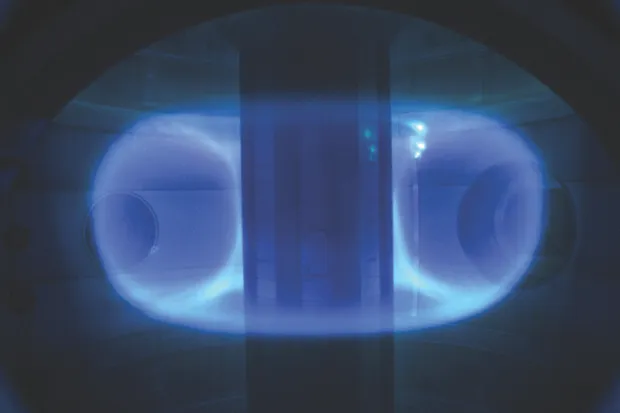
But the crucial innovation, according to the Tokamak team, is the powerful magnets used to generate the fields that confine the plasma. Most tokamaks use either conventional ‘supermagnets’ made from special metal alloys, or electromagnets made from coils of superconducting materials, which lose all electrical resistance when cooled and can therefore carry large currents. But Tokamak goes one better by using so-called high-temperaturesuperconductors (HTSs) to create the magnetic fields in their machine. These materials, discovered in the 1980s, can superconduct at higher temperatures than ordinary superconductors and so can be relatively easily cooled using liquid nitrogen. Crucially, they can also carry bigger currents and so generate stronger magnetic fields. Kingham thinks that using HTSs for nuclear fusion magnets could be their ‘killer app’.
“There’s a growing recognition that HTS magnets are a boost to fusion,” says Tokamak’s seniorcommercial manager Dr Ross Morgan, pointingout that Commonwealth Fusion Systems, a spinout company from the MIT Plasma Science and Fusion Center in the US, also considers this to be the key enabling technology. If it’s to work, the materials will need to be made in large quantities, and right now there are few suppliers – one reason why using HTSs is much more feasible for smaller machines. If HTSs became a central component of fusion reactors, they would surely be mass-produced, making them cheaper.
This is only one of the many engineering challenges that must be solved if mini-tokamaks are to become tomorrow’s power sources. Tokamak Energy also places its faith in an unusual tokamak shape: spheres, rather than the usual cylindrical devices favoured by the bigger projects such as ITER and JET. Spherical tokamaks have “significant physics advantages but greater engineering challenges,” says Kingham.
This is a view that’s echoed by Chris Warrick, the communications manager at the UK Atomic Energy Authority (UKAEA) in Culham. “We have known for decades that more compact, ‘spherical’ tokamaks have great potential,” he says. “They are inherently more efficient than conventional tokamaks, requiring less magnetic field to confine the plasma of fuels.” The UKAEA has been developing its own small spherical tokamak, called the Mega Amp Spherical Tokamak (MAST), since the late 1990s. But Warrick adds that they have drawbacks too, especially the challenges of removing the tremendous amount of heat from the reactor, because it is more intensely concentrated in the compact design.
Powering the future
Tokamak Energy is just one of the small players in this game. In the United States alone there has been over $1bn of private venture capital put into fusion projects, and there are now about 25 such companies worldwide. One is AGNI Energy, a Washington-based start-up pursuing an unconventional version of scaled-down fusion in which a beam of high-energy deuterium atoms is fired at a target of lithium and tritium. However, the company’s CEO Troy Dana says it is not seeking to use nuclear fusion for power generation. “We have identified commercial applications for our device that do not require net energy gain,” he says. The company hopes to have a proof of concept device operating by mid-2019.
Meanwhile, General Fusion, based in Burnaby, Canada, is aiming to develop the world’s first commercial nuclear fusion power plant using a new technique called ‘magnetised target fusion’. This, explains CEO Christofer Mowry, combines aspects of the magnetic confinement of plasma in a tokamak with the alternative approach to fusion called ‘inertial confinement’, in which lasers are used to cause sudden, high compression of the fuel to trigger fusion. In the General Fusion device it happens in a pulsed manner, rather like the compression cycles of an internal combustion engine. Mowry argues that the bigger fusion projects aren’t trying to make cost-effective, commercially viable forms of fusion – which, he says, is precisely why the smaller private enterprises can complement those efforts.
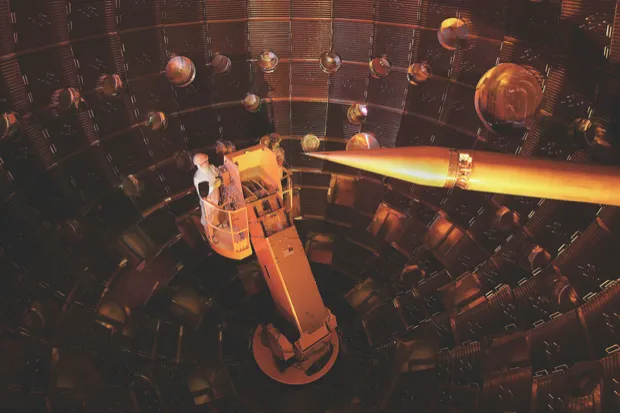
If small-scale commercial nuclear fusion reactors were to become a reality, it wouldn’t just transform the way we make energy, it would also alter the whole infrastructure. Unlike fission, fusion can be switched off in an instant. “In a fusion reactor at any one time, you have only a few seconds’ worth of fuel, whereas in a fission reactor you have 25 years’ worth,” says Kingham. “It’s inherently a lot safer.”
That means nuclear fusion reactors wouldn’t need to be far from centres of population or industry. It’s possible to imagine towns or companies having their own dedicated machines, making energy generation much more distributed and local.
But will the little guys really achieve where the giants have so far failed? “They [the larger projects] were rather taken aback five years ago when we started to look serious,” says Kingham. According to Morgan, the ability of start-ups to build small devices rapidly – in three to four months – is crucial. It means they can learn quickly and build that knowledge into the next generation. In contrast, says Kingham, the large-scale projects “tend to be quite risk-averse and conventional.”
Tokamak Energy says that they hope to have a practical device that achieves industrial-scale heat by around 2025, which could become commercialised by 2030. That’s ambitious. But as Kingham says, “to make progress, we’ve got to have bold plans.”
This is an extract from issue 329 of BBC Focus magazine.
Subscribe and get the full article delivered to your door, or download the BBC Focus app to read it on your smartphone or tablet. Find out more
The fight for fusion
How Tokamak Energy compares to other nuclear fusion projects…
1
Tokamak Energy

Location: Milton, Oxfordshire, UK
Date founded: 2009
Type of reactor: Compact spherical tokamak with high-temperature superconducting magnets
Estimated cost: Undisclosed
Current status: Achieved temperatures of 15 million degrees Celsius in 2018
Ultimate goal: To produce commercially viable fusion power by 2030
2
AGNI Energy
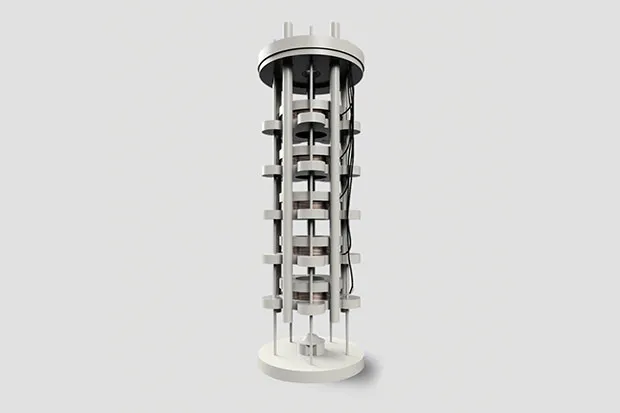
Location: Olympia, Washington, USA
Date founded: 2017
Type of reactor: Beam-target
Estimated cost: $5m (£3.9m approx) for proof of concept; $150m (£117m approx) for pilot plant
Current status: Seeking a strategic partner
Ultimate goal: Applications in disposal of nuclear waste, and producing fusion energy for eventual scale-up
3
Commonwealth Fusion Systems
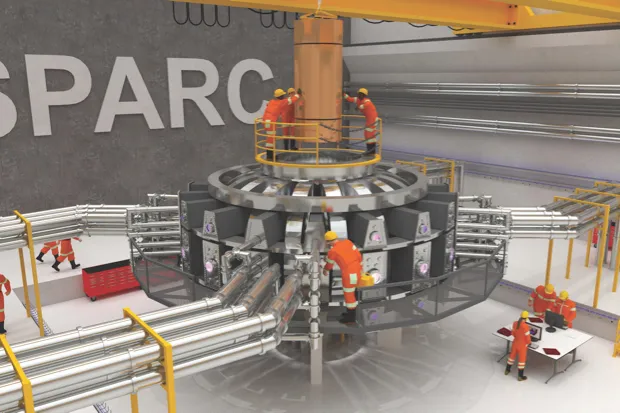
Location: Cambridge, Massachusetts, USA
Date founded: 2018
Type of reactor: Conventionally shaped, scaled-down tokamak
Estimated cost: Not disclosed
Current status: Demonstrating magnet technology and preparing to build tokamak
Ultimate goal: Demonstrate net fusion energy by 2025, with the first power plant operational in around 2033
4
General Fusion
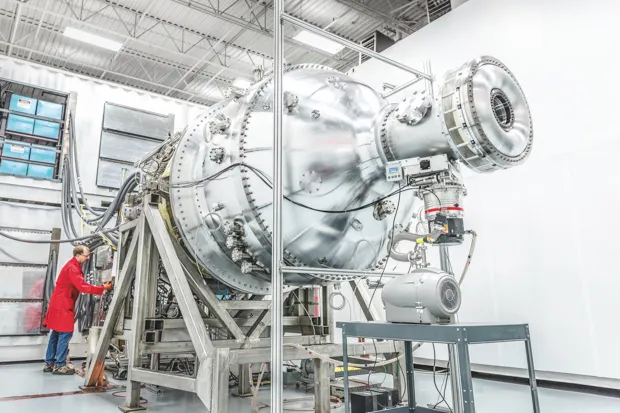
Location: Burnaby, Canada
Date founded: 2002
Type of reactor: Magnetised target
Estimated cost: Several hundred million pounds
Current status: Currently testing components for a demonstration plant
Ultimate goal: Pilot plant within five years, full-scale commercial plant five to seven years later
5
JET (Joint European Torus)
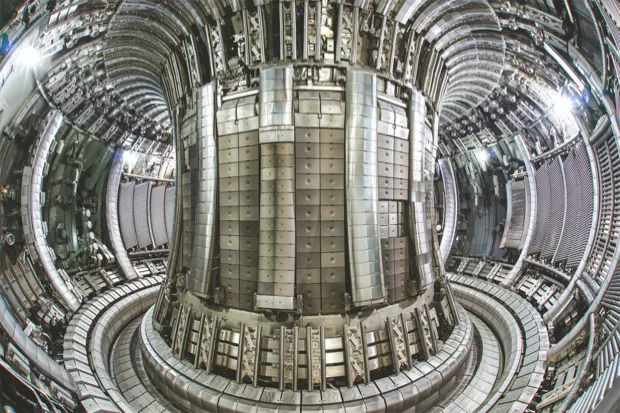
Location: Culham, Oxfordshire, UK
Date founded: Operation began 1983
Type of reactor: Conventional large tokamak
Estimated cost: €200m (£178m approx)
Current status: Holds world record for fusion output power: 16MW in 1997
Ultimate goal: Experimental device to study fusion under conditions approximating those in a commercial power plant (already achieved)
6
ITER (International Thermonuclear Experimental Reactor)

Location: Cadarache, France
Date founded: Construction began 2013
Type of reactor: Conventional large tokamak
Estimated cost: $20bn (£15.6bn approx)
Current status: Under construction
Ultimate goal: Deuterium-tritium fusion by 2035, eventually with output power of 500MW
Follow Science Focus onTwitter,Facebook, Instagramand Flipboard
